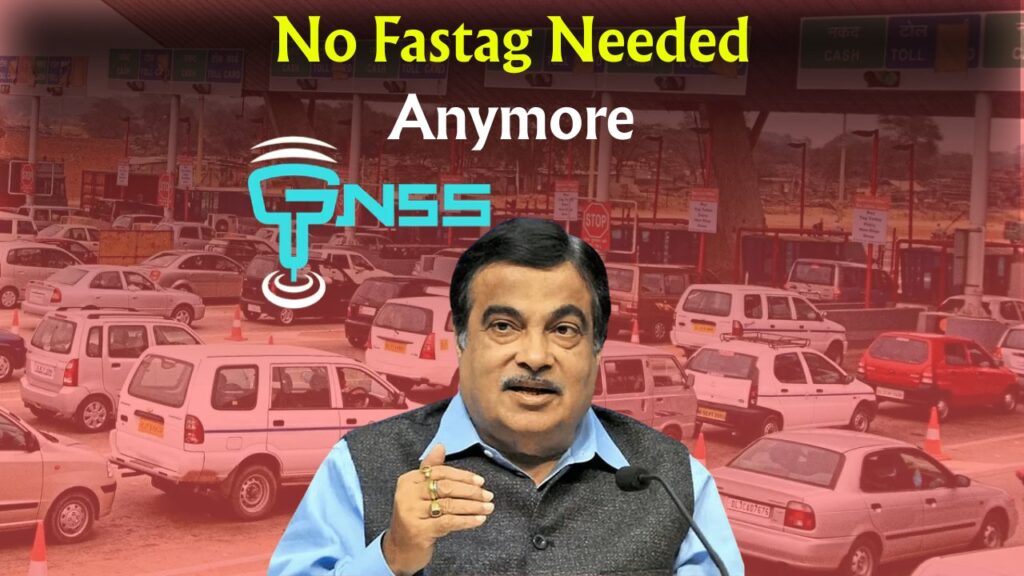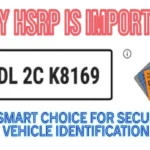India is planning to update highway toll collection system (GNSS Based FasTag toll) with a GPS-based system starting from May 15, 2025, replacing FASTag. This new system uses GNSS technology to track vehicles and calculate tolls based on actual distance traveled, so that fair charges and reducing traffic in toll booths. This activity is planned to rollout in phased manner and will begin with commercial vehicles, promising a more efficient and transparent highway experience.

What Is GNSS Based FasTag toll?
Global Navigation Satellite System (GNSS) tolling leverages satellite positioning—GPS, India’s NavIC, or other GNSS constellations—to record each vehicle’s movement and compute tolls strictly by distance travelled. Unlike legacy RFID systems (FASTag) that bill per plaza entry, GNSS uses an on‑board unit (OBU) inside each vehicle, which continuously logs position and time data; this is then matched against toll zones in a central back‑office for billing.
Long queues and fixed‑rate charges at toll booths become relics of the past. No gantries, no stickers, no abrupt stops. Just seamless satellite tracking—and an automated deduction from your linked bank or digital wallet.
Why Move Beyond FASTag?
FASTag cut waiting times but still needs physical infrastructure—plazas, RFID readers, and staff. That hardware carries maintenance costs and is prone to vandalism or technical glitches. Moreover, FASTag billing is flat per-entry or exit, regardless of distance driven, which can feel arbitrary for short‑trip commuters.
GNSS tolling promises to:
- Eliminate manual errors and fraud through immutable satellite logs.
- Slash infrastructure and upkeep costs—no plazas, no scanners, no queues.
- Enable truly distance‑based charging on all roads, from expressways to rural bylanes.
- Lay groundwork for future road‑usage taxes that could incorporate time‑of‑day or vehicle‑type surcharges.
Yet, the government’s own statements appear mixed: while the Ministry of Road Transport and Highways (MoRTH) is piloting GNSS tolling, it recently clarified there is no blanket decision to replace FASTag nationwide on May 15, 2025.

How GNSS Tolling Actually Works
- OBU Installation: Each vehicle must install an OBU—an IRNSS/GPS‑capable device—at authorized centers.
- Data Logging: The OBU records time‑stamped location points as the vehicle moves.
- Data Transmission: Periodically, the OBU transmits encrypted trip data via mobile networks or short‑range communication to a central server.
- Toll Calculation: A back‑office system maps the trip path against toll‑rate zones and computes the exact fee.
- Automatic Deduction: The computed toll is debited from a pre‑linked bank account or e‑wallet, with digital receipts provided instantly.
Some systems even perform map‑matching and fee calculation on the OBU itself, sending only the final bill for settlement.
Vehicle‑Owner Checklist
- OBU Fitment: Visit an authorized center before May 15. Subsidies or installation‑fee waivers may apply in certain states.
- Account Linking: Ensure your bank account or UPI wallet is linked to the OBU.
- Function Test: Verify through a test run that your OBU logs correctly and shows no error codes.
- Rate Familiarization: Review distance‑based tariff charts—peak, off‑peak, and zone‑differential rates.
Failure to comply could incur penalties or manual toll charges at plazas that remain operational during the transition phase.
GNSS vs FASTag: Side‑by‑Side
| Feature | FASTag (RFID) | GNSS (Satellite‑Based) |
| Toll Points | Fixed plazas | Any public road segment |
| Billing Logic | Flat per entry/exit | Exact distance‑based |
| Infrastructure | Gantries, RFID readers, booths | OBUs only; no roadside hardware |
| Traffic Delay | Moderate queues possible | Virtually zero |
| CapEx/Opex | High maintenance | Lower infrastructure cost |
| Expansion Flexibility | Limited to National Highways | All roads, including rural lanes |
| Data Utility | Basic transaction logs | Rich GPS trace data for planning |
Also Read about – Vehicle scrappage policy in India
Anticipated Benefits
- Zero‑stop travel: No deceleration or human intervention at plazas.
- Environmentally friendly: Less idling, lower emissions.
- Fairness: Short‑trip commuters pay less; heavy users pay proportionally more.
- Data‑driven planning: Authorities gain granular insights into traffic patterns for infrastructure optimization.
Challenges & Government Mitigations
| Challenge | Mitigation |
| OBU installation cost | Subsidies, free‑fitment camps in rural areas |
| Digital illiteracy among non‑tech users | Helplines, on‑ground awareness drives |
| Connectivity blackspots | Offline data catching in OBU; periodic sync |
| Privacy concerns over location tracking | Data encryption; strict GDPR‑style guidelines |
| Conflicting official statements | Central FAQ portal; clear MoRTH press releases |
Phased Rollout Timeline
| Phase | Network Segment | Date | Focus |
| 1 | Major National Highways | May 15, 2025 | Commercial vehicles mandatory |
| 2 | State Highways | July 1, 2025 | All vehicle categories |
| 3 | Tier‑2 & Tier‑3 city roads | Oct 1, 2025 | Rural commuter outreach |
| 4 | Complete pan‑India coverage | Jan 1, 2026 | Full migration from FASTag |
Between phases, select toll plazas will retain FASTag readers and ANPR cameras to serve as fallback mechanisms.
Key Takeaways for Commuters
- Prepare early: Don’t wait until the last week of May.
- Verify OBU health: Treat it like a FASTag health check.
- Monitor official portals: NHAI and MoRTH websites will host updated maps, FAQs, and troubleshooting guides.
- Stay informed about charges: Distance‑based tariffs may vary by time or zone—review schedules frequently.
Conclusion
India’s foray into GNSS‑based tolling heralds a new era of seamless, equitable road‑usage charging. While FASTag modernized toll collection, GNSS promises to dismantle physical bottlenecks and align costs precisely with usage. Yet, successful adoption hinges on clear communication, robust privacy safeguards, and ensuring no commuter is left behind—digital or otherwise. As the May 15 launch approaches, proactive installation of OBUs and familiarization with distance‑based rates will ensure you reap the full benefits of India’s satellite‑powered toll revolution.
Note: Given conflicting reports on the exact start date, vehicle owners are advised to verify the final rollout schedule on the official NHAI (National Highways Authority of India) or MoRTH (Ministry of Road Transport & Highways) portals before deciding.


